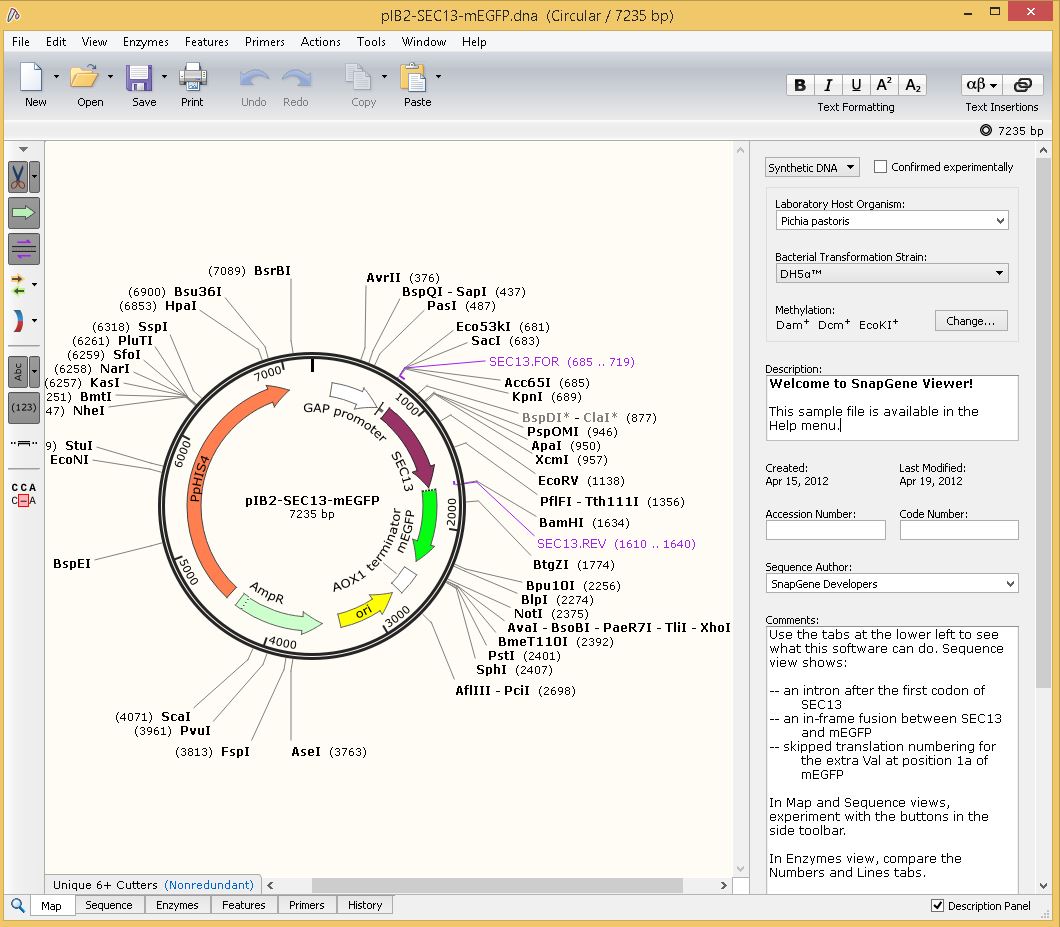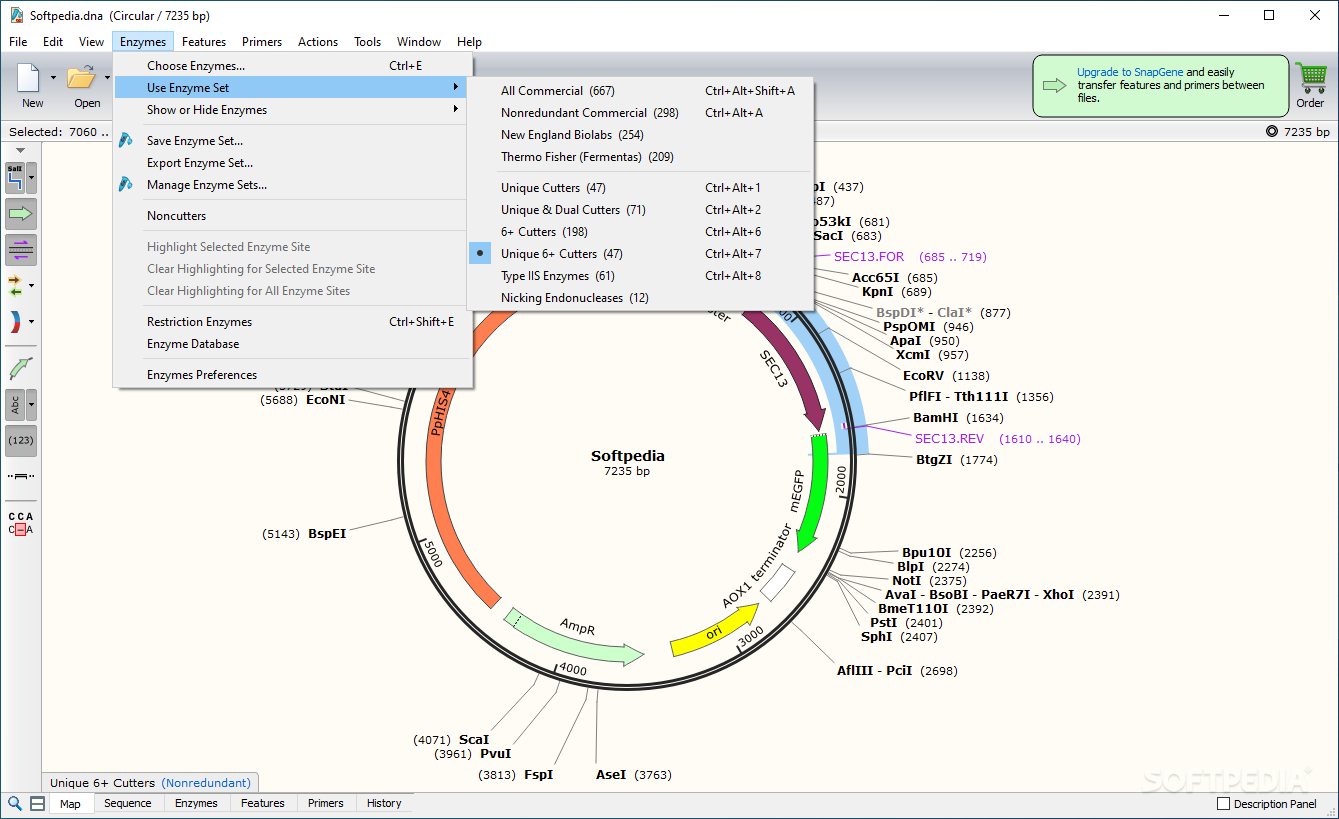

- #Snapgene viewer vs vectornti serial#
- #Snapgene viewer vs vectornti update#
- #Snapgene viewer vs vectornti upgrade#
- #Snapgene viewer vs vectornti software#
- #Snapgene viewer vs vectornti download#
Important: Different programs may use files with the PA4 file extension for different purposes, so unless you are sure which format your PA4 file is, you may need to try a few different programs.

#Snapgene viewer vs vectornti update#
We are continually working on adding more file type descriptions to the site, so if you have information about PA4 files that you think will help others, please use the Update Info link below to submit it to us - we'd love to hear from you! While we do not yet describe the PA4 file format and its common uses, we do know which programs are known to open these files, as we receive dozens of suggestions from users like yourself every day about specific file types and which programs they use to open them. However, different programs may use the PA4 file type for different types of data. If you are an open source purist, you are out of luck: there are several free solutions, but none of them is open source.The PA4 file extension indicates to your device which app can open the file. What would be the next best thing if you can't pay for it? Probably SerialCloner. We also know that many other labs use and like this software, including Addgene (if anyone is in need of a good plasmid mapping software, it would be them).įor me, SnapGene is the way to go if you need a cloning software.
#Snapgene viewer vs vectornti software#
We immediately bought additional licenses and have been installing the software on our Ubuntu machines (one 14.04 and three 15.10 machines). To top it all, with Version 3.0, SnapGene has recently released a native Linux port of SnapGene. in the Vector NTI, MacVector, ApE, DNAstar, pDRAW32 and GenBank formats. When we organized a cloning course for the graduate school last year, the SnapGene guys arranged free licenses for all of the students for the duration of the course. SnapGene Viewer Alternative - So many alternatives app to SnapGene Viewer that. We had some issues with opening files on remote samba shares, but it appeared that this was a problem of the gnome virtual file system when we mounted the shares via the Nautilus GUI (the bug still exists in Ubuntu 15.10 when you mount a samba share via the GUI, its mountpoint doesn't show up under /run/user/XXXX/gvfs and you need to force-unmount and manually start the gnome virtual file system again, after which the mountpoints magically appear: First, mount the samba share via GUI, then (via the command line): sudo umount -f /run/user/1000/gvfsz, then (as regular user) /usr/lib/gvfs/gvfsd-fuse /run/user/1000/gvfs, then mount the samba share again via GUI.Įven though they did not officially support SnapGene under WINE, the developers have helped us a lot with our WINE-related problems. When we bought our first licenses, it was not yet natively available for Linux and hence we did run it under WINE, where it performed very well. We have also put in one feature request: Virtual agarose gel images for partial restriction enzyme digests.
#Snapgene viewer vs vectornti download#
#Snapgene viewer vs vectornti serial#
SnapGene reads among others: ApE, Clone Manager, DNASTAR Lasergene®, DNA Strider, EMBL (ENA), EnzymeX, GenBank/DDBJ, Gene Construction Kit®, MacVector, pDRAW32, Serial Cloner and Vector NTI®. This was important for us as we had hundreds of our plasmid maps made with GeneConstructionKit.

Just around that time, SnapGene was released and it fulfilled almost all of our requirements: I suppose that the codebase of GCK is probably more than 20 years old and for that reason nobody dares to touch it. We contacted the developers of GCK, but they apparently were either not willing or able to help us.
#Snapgene viewer vs vectornti upgrade#
However, with the upgrade to version 4, GCK became unusably slow under WINE and we were looking for a replacement. However, since several of our computers run Ubuntu Linux, we did run GCK versions 2.5 and 3 using WINE (a compatibility layer that allows us to run native Windows programs under Linux). The latter runs unfortunately only under Windows. Among those that we liked a lot for a long time were Textco's GeneConstructionKit (GCK) and Clone Manager (Professional). Our lab has been using different software packages to plan, document and visualize DNA constructs.


 0 kommentar(er)
0 kommentar(er)
